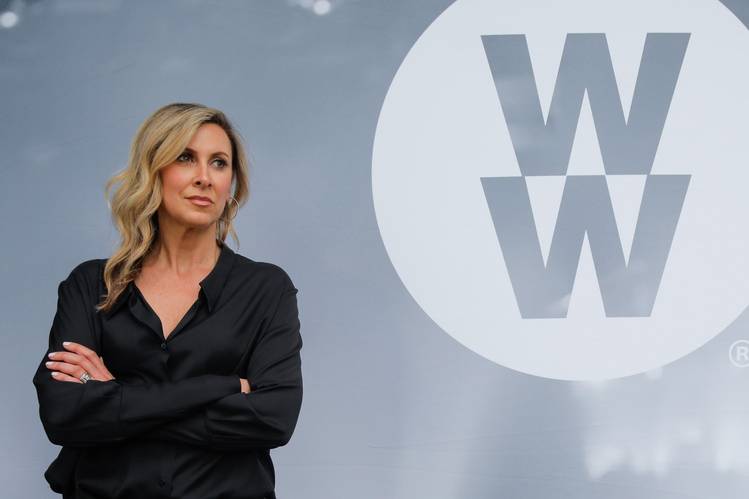

Weight Watchers recently rebranded itself as simply WW. The move was accompanied by a shift in focus from weight loss to wellness. But Gail Tifford explains that it’s more than a rebrand; it’s a transformation of the brand, with a whole new perspective on running the business and serving its members.
The company long known as Weight Watchers made news recently when it announced it was changing its name to simply WW. That move accompanied a shift in focus, the company said, from simply weight loss to the broader category of wellness. Gail Tifford, a lawyer turned sports marketer turned brand manager, joined WW earlier this year as its first chief brand officer to help roll out these changes. She spoke to SheReportsTM recently about managing with a brand focus, not a financial one, and how much an authentic journey matters to women.

What brought you to WW?
I had a 21-year run at Unilever. Then a year ago this November, I got a call that would change my life. It came out of the blue: a recruiter said she had a job for me. I kind of laughed, and I asked what it was. A chief brand officer, she said. “OK,” I said, “that sounds interesting.” And then she told me it was for Weight Watchers. And I went, “Oh.” I told her it’s a brand that changed my life 16 years ago, but it is totally not relevant to me now. And she replied, “That’s why this is the job for you.” She wanted me to have breakfast with CEO Mindy Grossman, and after an hour with her, I was ready to join the crusade. I ended up arriving in March.
Did you come to do the rebrand?
I think about it more as a brand transformation. To me, “rebrand” just implies we changed the name. But Mindy has been transforming the brand to launch with a new purpose, with an impact manifesto, and to be a globally brand-led organization. They had done all of the work on the brand and the purpose, but they now needed someone to bring it to life for their members and consumers. So, I was brought on to build their first-ever global brand team.
What does it mean to be a brand-led organization?
The company had been run as a direct-response company. They basically had a product — an amazing product — that they were selling. They focused a lot of their communication on the diet product. And a lot of decisions were made because of financial reasons versus through the prism of what the brand should do.
I’ll give you an example. Take our app. The ability to download the app in the app store was very limited. For a while, you couldn’t even do it, and then once you could, it was not very consumer-friendly. Because Apple takes a percentage of in-app sales, we weren’t encouraging it. From a financial perspective, that makes sense. From a brand perspective, you want to be there to meet that consumer where they’re at, whether that’s online, mobile, in meetings. And that’s the difference moving forward.

The renaming has been in the news. But, as you say, this is much larger than just that.
Yeah, I kind of giggled at the headlines. I understand headlines are headlines, and everyone loves that WW was slimming down. But the reality is we’ve evolved to the brandmark that our members already know and love. Our members already talk of themselves as part of the WW family and the WW team. I think about it like General Electric going to GE. WW is the brandmark that’s very powerful for our members.
But I think a bigger part of the story is what we call our bold moves. For example, when we launched our impact manifesto, which is all about inspiring healthy habits for real life, we created what’s called a “purpose filter.” We use that filter for the projects that we greenlight, for the people that we hire, for the products that we make. We have a consumer products line, the foods we’re making. We put that products line through the purpose filter. And guess what? It failed. Seventy percent of our consumer products had artificial ingredients in them. We had a decision to make. If you’re a finance-led organization, you say, “Who cares? Just keep making it, and keep selling it.” For us, by using that purpose filter, it didn’t sit right. It was not in line with inspiring healthy habits. So, we have been in the process of reformulating our entire consumer products business to remove artificial ingredients, artificial colors, artificial preservatives. That’s a big initiative.
Is the way you market changing too?
Absolutely. Two things changed. One is what I call moving from seasons to reasons. We’re no longer about “weight loss season,” because people want to get healthy 365 days a year. They want to get healthy for many different reasons. It could be as simple as wanting to learn how to play tennis, to be healthy for a child, to look good to get back out there post-divorce or to start a new job. This whole thinking around Diet January — we’ve moved away from that.

It’s kind of intuitive, but the other interesting thing about the reasons is that — and you can be black, white or purple, a billionaire or minimum wage, old or young — everybody has a reason why they want to get healthy. With this shift in strategy, you’ll see much more of a targeted, relevant and personalized communication that acknowledges when they’re in that sort of mind-set.
We have a consumer products line, the foods we’re making. We put that products line through the purpose filter. And guess what? It failed.
Are there messages you find resonate with women today differently than in the past?
Women want to speak with a brand. They do not want to be spoken to. In the past, I think our advertising came across as sometimes preachy. Now, it’s really about conversation, it’s about empathy and it’s about inspiration.
I also think women — and this goes for men too — want to see the journey. It used to be that you would hire a celebrity spokesperson, stick them in the closet and then, ta-da! They’d pop out skinny six months later. I would say our members, and women in general, want to see the highs, the lows. They want to know that there are other people who have the same struggles and talk about them in an authentic and genuine way. That kind of authenticity is really, really important.
We’re no longer about “weight loss season,” because people want to get healthy 365 days a year.
And women want to see themselves in advertising, whether that’s life stages, demographically, physically. I think it’s really critical that we portray diverse types of women and men.
That fits in with the #SeeHer initiative to change depictions of women in advertising.
The whole premise behind #SeeHer is to confront the stereotypes that were perpetuated in media and advertising. If you think about the model of hiring the celebrity and sticking her in the closet, there was a lack of recognition of the journey, the struggles, the victories. It negates that the journey ever happened. #SeeHer is all about the accurate portrayal of people, of girls and women, and that’s something that this brand takes very seriously.

